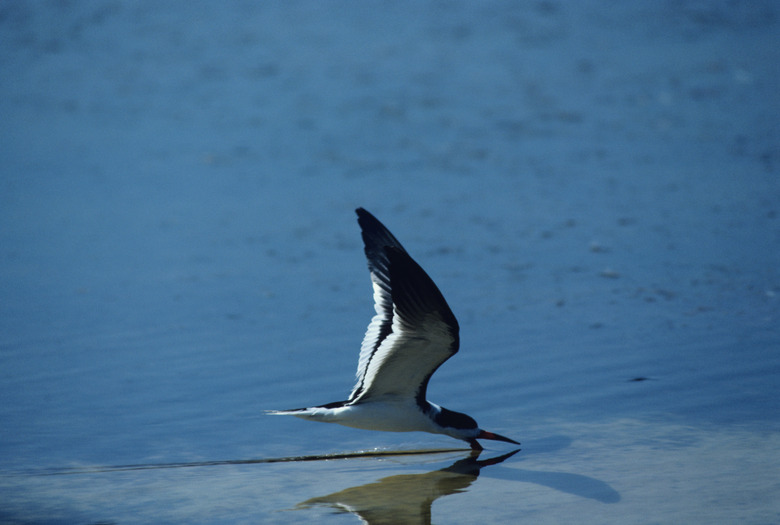What Adaptations Do Plants & Animals Have In Saltwater Biomes?
The saltwater biome is an ecosystem of animals and plants and it consists of oceans, seas, coral reefs and estuaries. Oceans are salty, mostly from the kind of salt that is used on food, namely sodium chloride. Other types of salts and minerals are also washed down from rocks on land. Animals and plants have used various ways to be able to survive in the salty conditions.
Fish and Reptiles
Fish and Reptiles
In saltwater, the concentration of salt is higher outside the fish and salt leaks into the fish. Fish can drink saltwater and eliminate the salt through their gills. Fish also use their kidneys and ion pumps, such as a sodium/potassium pump, to excrete extra salt. Most fish live either in fresh or saltwater, but some fish, like salmon and eel, spend part of their lives in freshwater and part in saltwater. These animals change their metabolism in order to survive in the different water conditions. Crocodiles living in saltwater have adapted by developing special glands in their tongues to help them excrete salt.
Birds and Mammals
Birds and Mammals
Seabirds can drink water and the excess salt is eliminated via the nasal into the nasal cavity. The nasal is sometimes referred to as the salt glands and the bird sneezes or shakes out the salt from the nasal cavity. Some animals have made adaptation so that they do not drink the water, for example, whales get their water from the animals they eat.
Plants
Plants
Ocean plants have adapted to the salinity by breaking down salt into chlorine and sodium ions. Some plants store the salt and later dispose it via their respiratory process. Many plants live close to the seashore and they may have succulent leaves where they store water in the leaves. The plants use the water to dilute the saltwater concentration. Reducing the leaf surface is another way of adapting to the condition in a saltwater biome. Marsh grass extracts the salt and you can see white salt crystals on its leaves.
Mangroves
Mangroves
The mangrove tree grows in tropical estuaries and it has the ability to live in saltwater intertidal zones. The intertidal zone is the foreshore and seashore. During low tide, the tree is exposed to air. When the tide is high, the tree is covered in saltwater. Different types of adaptations to these conditions have been made, and some mangroves almost completely exclude salt and if you squeeze their leaves, you get almost pure water. The red mangrove contains a substance that keeps salt out. Often some salt slips through the waxy substance and this is sent to old leaves. The leaves fall off and the tree gets rid of the excess salt. White mangroves use another technique and their leaves become speckled white by the salt that passes from the inside of the tree. The tree can close up the pores in the leaves and keep as much salt as it wants to.
Cite This Article
MLA
Jomard, Asa. "What Adaptations Do Plants & Animals Have In Saltwater Biomes?" sciencing.com, https://www.sciencing.com/adaptations-plants-animals-saltwater-biomes-8374326/. 13 March 2018.
APA
Jomard, Asa. (2018, March 13). What Adaptations Do Plants & Animals Have In Saltwater Biomes?. sciencing.com. Retrieved from https://www.sciencing.com/adaptations-plants-animals-saltwater-biomes-8374326/
Chicago
Jomard, Asa. What Adaptations Do Plants & Animals Have In Saltwater Biomes? last modified March 24, 2022. https://www.sciencing.com/adaptations-plants-animals-saltwater-biomes-8374326/
